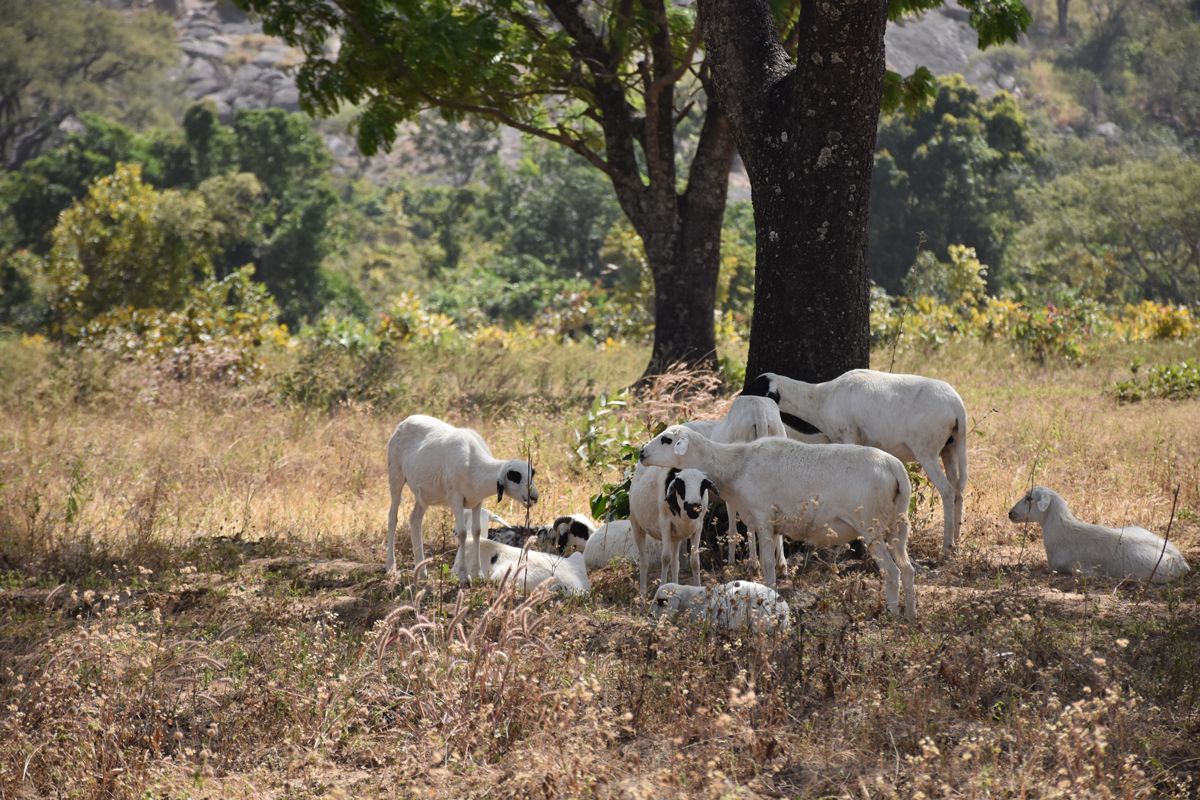In Nigeria, one of the world's most deforested countries, forest cover and wildlife habitat are disappearing in favor of agricultural land. At the same time, the need for wood and the development of urban areas are contributing to the over-exploitation of natural resources. To the northeast of the city of Pankshin, capital of the Plateau State, a project has been financed by Reforest'Action since 2022 and supported in the field by a non-governmental organization (NGO), Crescendo. The aim is to restore degraded farmland by creating living hedges to protect crops from livestock, and by developing agroforestry within cultivated fields.

Considering the needs of local communities in project design
Within the framework of the project, the integration of trees around and within agricultural plots aims to meet two main needs of the region's sedentary local communities: the protection of their crops from the cattle herds of nomadic breeders, and the accessibility of a wood resource derived from sustainable management and not from deforestation actions within the surrounding natural forests. Following in-depth botanical and landscape research, the project design was specifically conceived to take account of these local issues and determine the most appropriate planting schemes to provide optimal conditions for tree growth.
Creating protective hedges around fields
In the villages involved in the project, trees and shrubs are planted in hedgerows around the fields. These "living fences" are essential to protect the fields of local farmers, whose crops were frequently damaged by the cattle of the nomadic Fulani people, who cross the region during the dry season. The species planted (Acacia sp., jatropha, Syzygium guineense) have been carefully selected according to several characteristics:
- Fast-growing, to enable these protective hedges to be set up quickly
- Thorny, to drive out livestock.
- Bushy, to make hedges more impenetrable through low branching.
- Sociable, to optimize their ability to evolve within a dense linear stand.
- Fertilizing, to enrich cultivated soils with nitrogen.
- Hardy, to cope with water stress during dry seasons.
In addition to their defensive and repellent role against stray livestock, hedgerows are also environmentally designed to create a microclimate conducive to increased crop productivity and resilience. The methods applied help to restore biodiversity to farmland and prevent soil erosion, with a view to more sustainable agriculture.

Combining trees and crops in the fields
Trees are also integrated into cultivated fields. The species have been selected to meet the needs of the communities in terms of wood, fruits and fodder. The creation of these agroforestry systems will bring numerous benefits: increased food security thanks to fruit harvests from fruit trees (African elemia, African locust bean, tamarind), production of wood for cooking (gmelina, African mahogany, eucalyptus) and fodder from tree leaves (albizia, Leucaena, Samanea); to help feed the livestock of sedentary communities, but also those of the Fulani people, who will be able to feed their herds without damaging the crops of local farmers. At the same time, awareness-raising initiatives, including in schools, aim to improve understanding of climate and environmental issues, and to train local people in agroforestry techniques.

Tree production and the challenge of water scarcity
Initiated in February 2022, the first stage of the project involved setting up three nurseries to produce seedlings. The Pankshin region is particularly affected by water resource issues. The dry season, which generally runs from October to April, is characterized by rivers drying up and a total absence of rainfall for several months. To create the best possible conditions for tree growth in the nurseries, our local partner, Crescendo, drilled boreholes to install wells, which have been useful both to the villagers, for increasing the availability of drinking water, and to the trees being produced in the nurseries. In all, 12 technicians worked on the production of 240,000 trees of various species in the nurseries. Seedling production was completed in May 2023. This year's rainy season had an irregular start, with a period of heavy rainfall between April and May, followed by an unusually long drought. Although planting began with the first rains, the young trees had to be watered by hand afterwards to prevent them suffering from the drought. Today, planting continues and is almost completed.

Protecting the natural environment of Encephalartos, an endemic prehistoric species
In parallel with the project financed by Reforest'Action, our technical partner is also running a program to protect the Pankshin Hills Sanctuary. This is an ecological sanctuary located in a rocky and mountainous area, culminating at an altitude of about 1,600 meters, and home to a remarkable tree species, the Encephalartos barteri. This endemic species, whose existence dates back to prehistoric times, is now threatened with extinction: its total population within the sanctuary is estimated at between 300 and 1000 individuals. Against this backdrop, our partner Crescendo has obtained funding from the Darwin Initiative, a British government grant, to help restore the Encephalartos ecosystem and regenerate this species. This project to conserve the region's natural forests complements the Reforest'Action project, which aims to halt deforestation by providing communities with wood from sustainably managed agroforestry systems.
